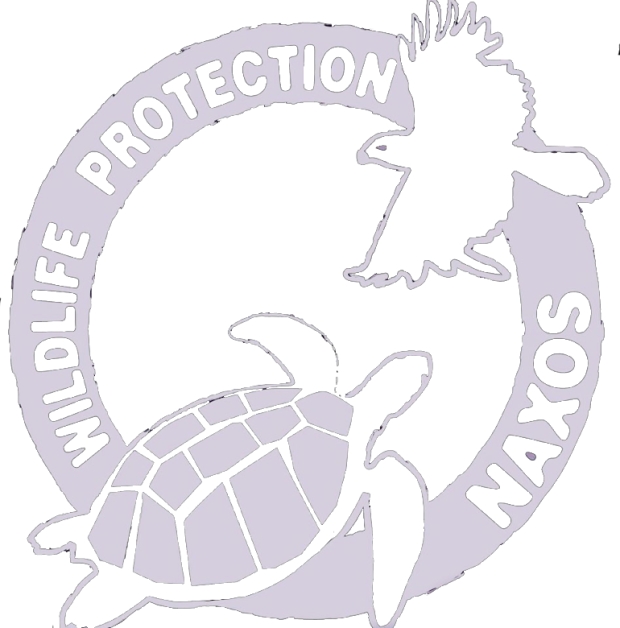English/Ελληνικά
Prokopis, the king

A gentle giant, an adult male Loggerhead turtle with a curved carapace length (CCL) of 89 cm (measured in 2021) can be seen every summer swimming the south-west coasts of Naxos island.
“Prokopis” was named after a beach where he was encountered often, resting on seagrass meadows, nibbling away sponges on the rocky reefs and nonchalantly ascending towards the surface to breathe.

According to photo-recordings, Prokopis was first seen by a volunteer of Naxos Wildlife Protection back in 2010, making him the oldest official recording of the association. Every year, this giant male returns to the coasts of Naxos to feed and mate.
It is not possible to tell a male from a female Loggerhead turtle by sight, unless they have reached maturity. Then, the male Loggerhead turtle is easy to distinguish by his long and strong tail which exceeds the length of the carapace. According to scientific literature, this dichotomy between the sexes becomes clear in turtles with CCL greater than 75 cm, but could be also evident in turtles with CCL greater than 60 cm (Casale et al. 2018).


All sea turtles we have encountered during our in-the-sea observations and during their stay at our care station have their own characters. In the presence of humans, though, wild animals tend to stress and, most of the times, flee. This is why it’s crucial that only specialized people tend to wild animals.
In the wild, it is not easy to observe and record sea turtles. The majority of them will swim away in great speed and disappear into the blue. But some, like Prokopis, seem to feel indifferent in the presence of us.
As always, when we encounter a wild animal we keep a safe distance never blocking the animal’s way and, thus causing them stress, something we do not want anyway as it would bias our observations.
Prokopis has become a favourite of our volunteers, because it is so easy to tag along and watch him as he swims, breathes, rests and feeds, providing us with amazing footage of behavioural data and because the time with him is simply relaxing!
In summer of 2022, Prokopis made his first appearance in mid May. We are always thrilled to see the same sea turtles return to Naxos every year, knowing that they survived another harsh winter facing all possible dangers and threats.
Prokopis usually appears covered in scars on his face, indicating either fighting with predators or other male turtles, but this year he looks his best!




Loggerhead turtles are solitary animals and will only be found in the company of other individuals of their kind during courtship and mating. According to our observations, Prokopis is the only turtle we have seen that hasn’t shown aggression towards other individuals (specifically Rica, Marios and Achilleas), but in general turtles will avoid each other.

An indication of a healthy sea turtle is the state of the carapace. It is normal for a sea turtle to carry epibiota (which consists usually of algae and barnacles), but normally a sea turtle will take care of her shell by scratching it under reefs. The picture on the left shows Prokopis with marks on his carapace after scratching it under a rock. This way they keep their shell healthy and hydrodynamic.


Right: Nireas, a seriously injured young male with a carapace covered in a thick layer of algae. Read his story here.
In the Meditteranean sea, Loggerhead turtles tend to spend most of their time in shallow waters in their foraging grounds which usually corelate with the mating grounds. Sea turtles like to rest in seagrass meadows and when they are feeding they will ascend to take a few breaths. This is why it’s crucial that we behave responsibly in the sea, by avoiding anchoring boats in seagrass meadows and driving boats fast without paying attention to possible sea turtles basking and breathing on the surface.


Swimming all these years with Prokopis has taught us that it is not as difficult as we think to co-exist with other species.
By simply respecting and acknowledging their presence in this world we share, we can learn to unlearn ego and greed and, just like Prokopis shares his snack with a Rainbow Wrasse (picture below), we, humans, can co-exist harmoniously with sea turtles and all animals alike.

“We are like islands in the sea, separate on the surface but connected in the deep.“
— William James
